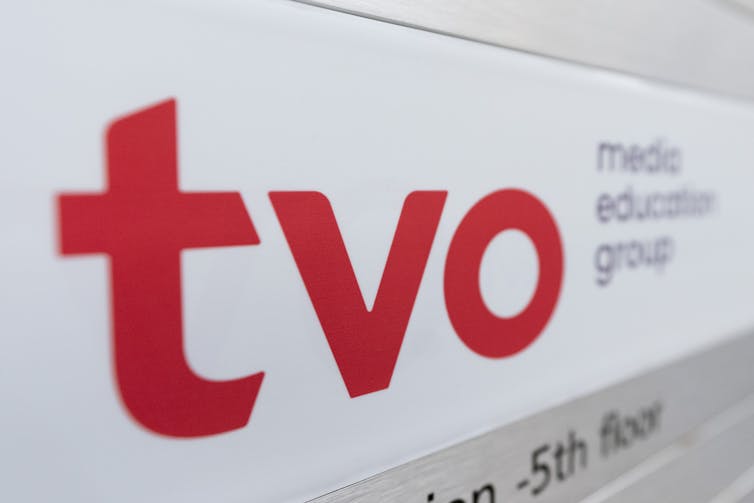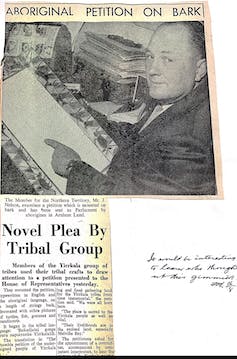Workers at TVO are on strike for the first time in the public broadcaster’s 53-year history.
Amid the din of traffic outside TVO’s offices in Toronto, unionized journalists, producers and education workers hold picket signs declaring: “Fund TVO Like it Matters.”
TVO’s contract with the union, a branch of the Canadian Media Guild, expired in October. After months of negotiations, workers are striking to improve wages and to address precarious employment.
The union says that workers have received below-inflation wage increases since 2012, including zero increases between 2012-2014.
I spoke to a producer who has worked at TVO’s flagship current affairs show, The Agenda, for 22 years and earns $74,000.
Wages shrinking
In a video posted to social media, digital journalist Daniel Kitts, who has worked at TVO for 25 years, says: “For the past 10 years we have tried to… support this organization by seeing our wages shrink basically every year thanks to inflation. And after 10 years, we just can’t do it again.”
Another crucial issue in the dispute is temporary and precarious employment, when workers are kept on perpetual contracts with no hope of their position becoming permanent.
TVO workers say these contracts prevent them from doing the kind of rigorous, civic journalism and current affairs programming that serves communities in Ontario.
In a news ecosystem where traditional advertising revenue is down, outlets chase clicks at the whims of platforms like Meta and X and disinformation circulates widely, the need for quality, fact-based public affairs programming is particularly urgent.
The risks of precarious work
In their 2015 study of precarious employment in southern Ontario, researchers found it has collective, cumulative effects on communities in what they call a precarity penalty.
People in precarious employment earn low incomes, face intermittent and insecure work, lack access to benefits and training and endure stress, social isolation and poor mental health.
Such pressures on individual lives shapes people’s participation in community life, and precarity becomes a burden borne by society at large.
Striking TVO workers are drawing attention to journalism’s precarity penalty: the consequences for robust journalism when the work of producing journalism is made precarious.
THE CANADIAN PRESS/Spencer Colby
At issue at TVO is funding. TVO is funded via a provincial Crown Corporation and reports to the Ministry of Education. It receives a base operating grant of $38.3 million annually, but funding hasn’t increased as costs and inflation have risen.
Rank-and-file workers are feeling the squeeze as senior managers receive above-inflation raises. The Agenda host Steve Paikin told CBC Ottawa that when he joined TVO 30 years ago, there were 650 people working at TVO. Now there are about 250. “I’m really nervous about the place being squeezed any further,” he said.
TVO’s contract workers
The government wants to see TVO increase “self-generated revenue,” including donations and sponsorships. But precarious employment is baked into this model, TVO union branch president Meredith Martin told me.
As money comes in for specific projects, workers are hired on contract. When the project ends, so do the contracts. No one is made permanent in such an unstable funding environment.
TVO wants the union to give up language that enables workers on contract for two years to become full-time employees, eligible for benefits and other protections. Martin has seen first-hand the problems the contract model brings to the workplace: high staff turnover, low morale and an inability for workers to invest in quality work.

THE CANADIAN PRESS/Spencer Colby
In journalism, precarity is manifold. Insecure work prevents people from establishing themselves in an organization and accessing career supports. Precariously employed journalists can’t contribute meaningfully to teams, speak out against sexism and racism at work or enjoy professional autonomy.
Employment insecurity is linked to industrial precariousness, where technological and economic changes spur management to shrink journalists’ wages and job security. As profits decline and labour forces contract, fewer journalists are in secure positions and increasing numbers of workers are on contract or freelance.
The impact on diverse communities
Two successive annual surveys by the Canadian Association of Journalists show that women, racialized, Indigenous, queer and trans journalists are concentrated in the most precarious positions, making it difficult to meaningfully diversify journalism in Canada.
Journalists, researchers and advocates have long been calling for increased racial and gender diversity in journalism, demanding that newsrooms represent the communities they report on. Precarity is an impediment to such diversity.
Public, non-profit outlets like TVO can and should become model employers, committed to producing journalism in the public interest and providing workers, particularly those from diverse communities, with the sustainable jobs necessary to do so. (The CBC is also under fire for maintaining a permanent underclass of temporary workers).
TVO workers are part of a broader movement to protect journalism via unionization. Since 2015, more than 150 newsrooms in Canada and the United States have organized unions.
In my review of their contracts, I find many examples of language that converts contract workers into full-time permanent workers after a set period, usually 12 months. This type of language is becoming the industry standard, negotiated by worker-led bargaining committees to gain some stability in an unstable industry.
Although work in journalism has never been a safe bet, it’s now rife with deepening uncertainty. In this context, TVO workers’ strike for material security to do work in the public interest matters more than ever.



